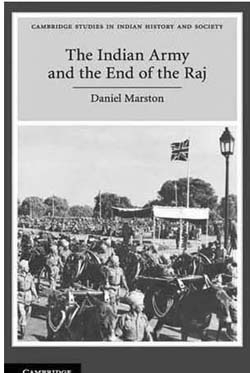“Provided that they (The Indian Army or IA) do their duty, armed insurrection in India would not be an insoluble problem, If however the IA were to go the other way, the picture would be very different.”
These lines sum up the essence of the book under review which examines the critical role played by the Indian Army during a vital period in the history of the subcontinent, the end of the Second World War and the rapid unravelling of the subcontinent as a single administrative unit culminating in a divided subcontinent in 1947 with all the attendant horrors which followed. The book argues that the Indian Army despite being put to unimaginable strain did not fall apart and continued to perform as a highly professional force, notwithstanding some aberrations.
Indeed the author argues that the Army was the only institution which just about managed to keep its head above the deadly communal virus which was tearing the social fabric of the subcontinent and was wringing communities, familes, localities which had lived together for generations despite occasional tensions and bad blood irretrievably apart. The author does not deny that there were instances when Army units were accused of communal bias, especially the units of the Punjab Boundary Force set up to check the deadly communal violence in the Punjab. Nevertheless the Army performed its duties admirably on most occasions free from any kind of prejudices though it was hampered by the emphasis on deploying minimum force, a severe disadvantage given the gravity of the situation. The author cites multiple instances where mainly Hindu or Muslim Army units did not hesitate to fire on rioters who were their co-religionists.

